There are only a few things that can go wrong with the simple carburettors used on the Honda c90 and – once you have a rough idea of how these parts work – the fixes are straight forward and largely common sense.
A note of warning from the early workshop manuals:
Engine trouble during acceleration is caused more by the ignition and valve system and it is wrong to attribute this only to the carburetor.
... sage advice since the symptoms of fuel/air issues can be very similar to those caused by problems with ignition and valves.
Blockages
in the immortal words of the translators of the 1961 Honda C50 workshop manual:
As Carburetor is like human respiratory organs it works very sensible. And just like human catches cold Engine occurs blowing-back or failure in suction at carbureter.
The tiny holes in the emulsion tubes and jets can get blocked with particles that have found their way past the fuel and air filters, or they can get clogged up by deposits left behind when old fuel goes stale.
An aerosol can of carburettor cleaner can be used to blow through the jets and airways to clear blockages. Don’t be tempted to use a metal wire to clear the holes as the parts are made of soft metal and it is possible to damage (and therefore widen) the very precisely drilled holes. Stubborn blockages may shift if you soak the parts overnight carb cleaner and – if you must use something to poke through the holes – then a bristle from a plastic dustpan and brush will be a narrow enough to fit through the holes and not so hard as to alter the diameter.
If you use carb cleaner or compressed air to clear a blockage it is helpful to think about the direction the air and fuel flows through each part when it is in use. Anything that has got stuck will have been travelling in that direction and, since applying more pressure may just wedge it further in place, it is best to blow in the opposite direction where possible.
Finally, don’t forget to clean the petrol and air filters.
Leaks
O-rings can compress or go brittle in use and may let fuel leak out from the drain screw, bowl or petrol tap. The solution is of course to swap the old o-rings with good quality replacements. I found the Keyster replacements (see below) were a reasonable fit for my PB25 carb. Check the o-rings and gaskets between the manifold, the engine and the carb in case they are leaking air.
Note that the carb body is made of a soft alloy and can deform if you over tighten the screws. This can be another source of air or fuel leaks so fit the screws carefully and avoid twisting any of the parts by incrementally tightening each screw. The screws just need to be gently nipped tight. One way to detect an air leak is to spray brake cleaner or some other flammable liquid around the joins between the manifold and carburettor and engine while the bike is running - if the engine revs change - this is an indication of a leak. Note that there is a risk of fire when doing this test so take precautions.
The connection to the intake manifold is particularly susceptible to warping and may be fixed by carefully lapping it on a flat abrasive (an oilstone or sandpaper affixed to a flat surface, for instance).
Wear
As we saw in the previous posts on the fuel supply system and the main circuit there are a couple of parts that can wear and may need replacement, specifically the float valve and the needle jet/jet needle set. If you can get original replacement parts then you can be sure they will be exactly as the manufacturer intended, but there is no such guarantee for the pattern parts[1].
Fuel overflows
If fuel is leaking out of the overflow or the bike is running very rich then the carburettor may be overfilling with fuel.
The float height does not need adjusting under normal circumstances, but if someone messed with yours before you got it then this post may help.
If there is any dirt between the tip of the float valve and the seat it fits into, then it may not be seal properly, allowing fuel to continue entering after the float reaches the point where it should have caused the valve to shut off the supply. The small rubber tip on the float valve can also lose its shape and harden with age and this can prevent a good seal with the float valve seat - get a genuine Honda replacement if you can.
Another potential source of problems with the level of fuel in the carb is that some older carbs have hollow metal floats that are prone to small pinholes developing in the solder joint between the two halves of the float. If fuel can enter the float it will reduce the buoyancy and too much fuel will be allowed into the fuel bowl as a result. This problem can’t occur with the PB25A used in the late 1970s C90s as it has a solid float.
If fuel continues to leak from the overflow having attended to all the above you might like to check the brass overflow tube as these have been known to crack.
Fuel starvation
A common fault is for the air vents in the petrol cap to become blocked with dirt or other debris. When this happens a partial vacuum can form in the tank which slows down or interrupts the flow of fuel to the carburettor. Typically the bike will run for a bit, stall, and then will only restart after a few minutes (by which time enough fuel will have got into the carburettor fuel bowl for the engine to run again).
Sticking parts
The throttle, slide, choke and throttle cables, choke plate, float and float valve all need to move freely – check and clean them as needed.
Replacement Parts
Although you can no longer get a complete replacement for the PB25A carb that came with the Honda C90 z2, most of the Keihin spare parts that Honda originally made available are still for sale, including adjustment screws, float needle, main jet, needle jet and jet needle[2].
The main jet and pilot jets should not need replacing unless they have been damaged by over enthusiastic cleaning. Allens Performance sell genuine Keihin parts if you know what you are looking for – the z2 used a #78 size main jet (Keihin 99101-116: 7mm length and M4x0.75 thread)

the original main jet is stamped with Keihin’s “K” logo and the size
Honda did not offer a replacement #38 push fit pilot jet but Keyster make a pattern part (sold by NRP)[3]. I don't know if it is a good replacement
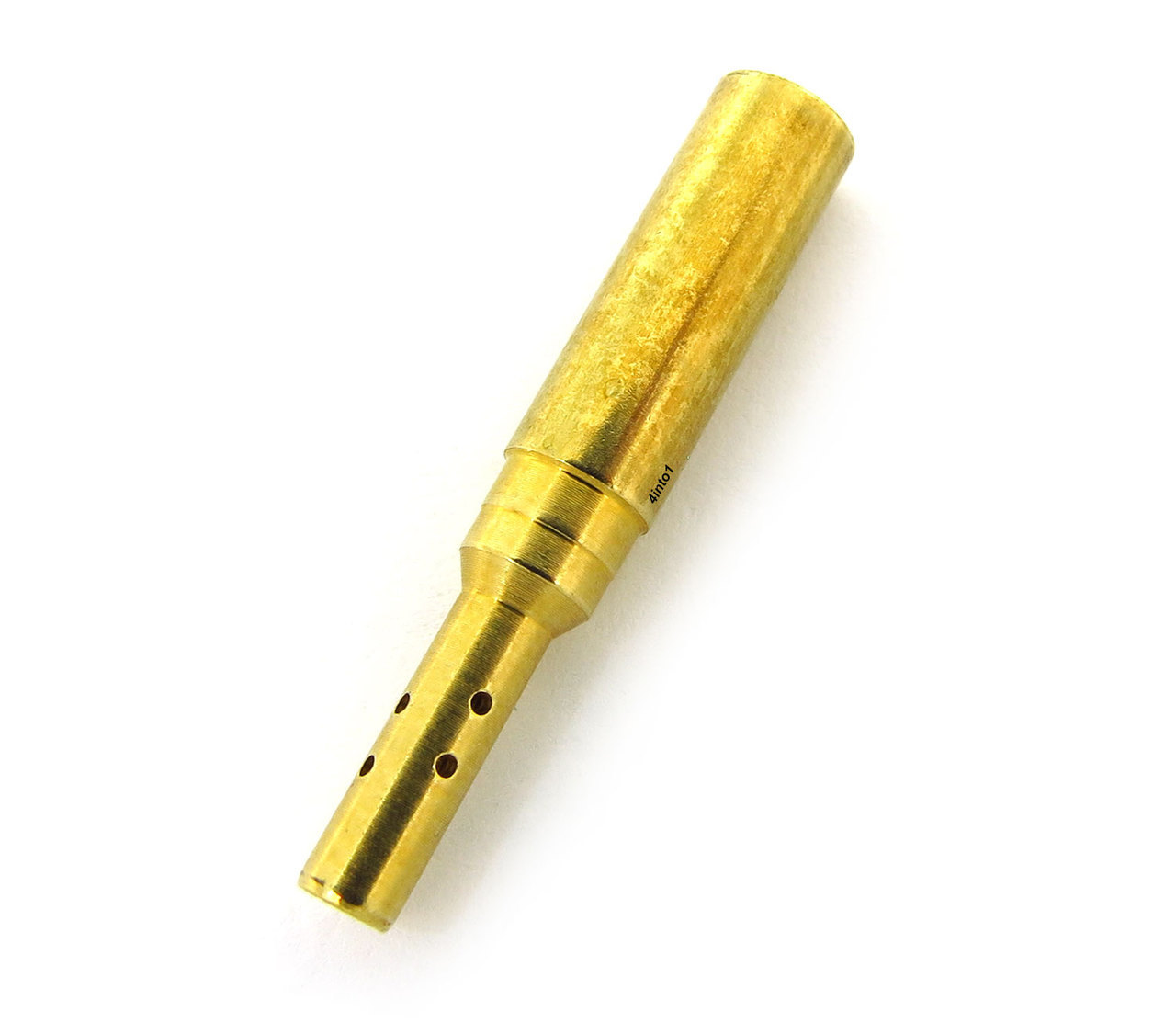
keyster 38 pilot jet
The jet needle naming convention used by Keihin is utterly bewildering so I am afraid I could not identify a part number (all I can tell you is it is stamped D32 - I have also seen 16331 stamped on a used ZZ carb, which - given the overal state of the carb - I believe was original). The needle jet and jet needle need to match and are generally sold as a set.

Keyster do a repair kit ( FH-5410N) for this model, but I was not able to find one sold in the UK. Note that the version available from CMS – assuming the picture is accurate – does not contain a needle jet. The IMPEX version is hopeless. To be honest if you do need new parts you are probably better off just stumping up getting the original Keihin parts from CMS – not cheap once you add in delivery to the UK but that is a good excuse to add in some additional items so you can spread the postage cost!
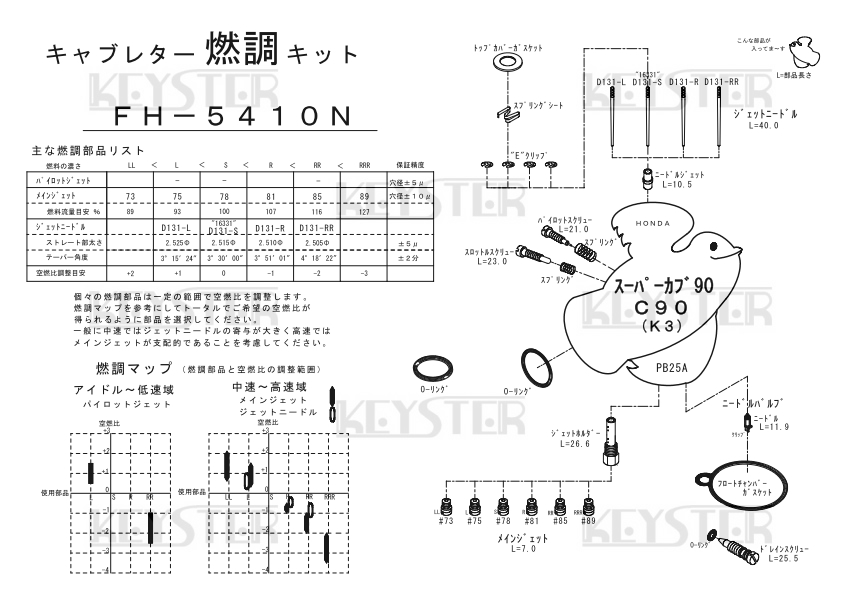
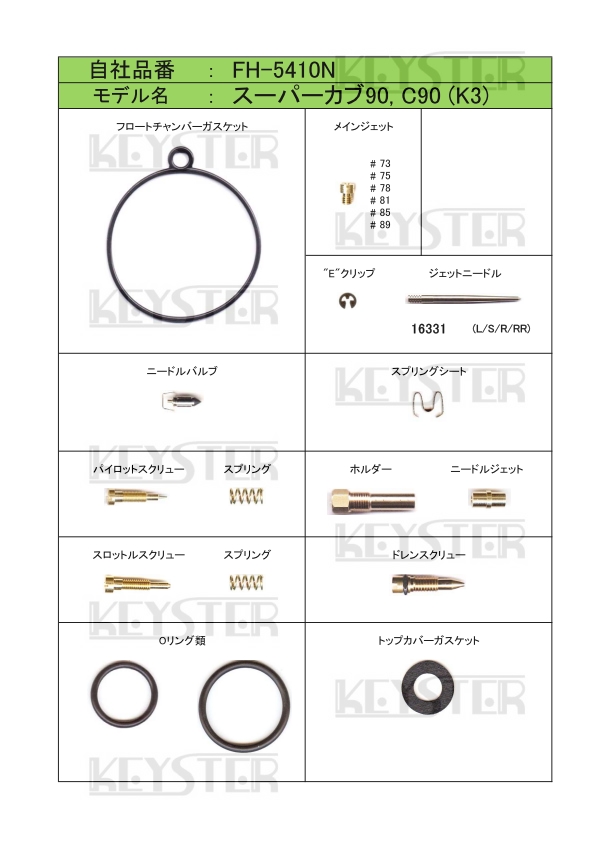
keyster kit
The keyster o-rings are a reasonable fit and are good quality replacements. Each part is very slightly larger than the original Honda part but this does not cause any fitting problems. The proper Honda kit (below) is designed for several carbs so you need to check it has all the parts you need. It comes with a fuel filter that fits the PB25A.
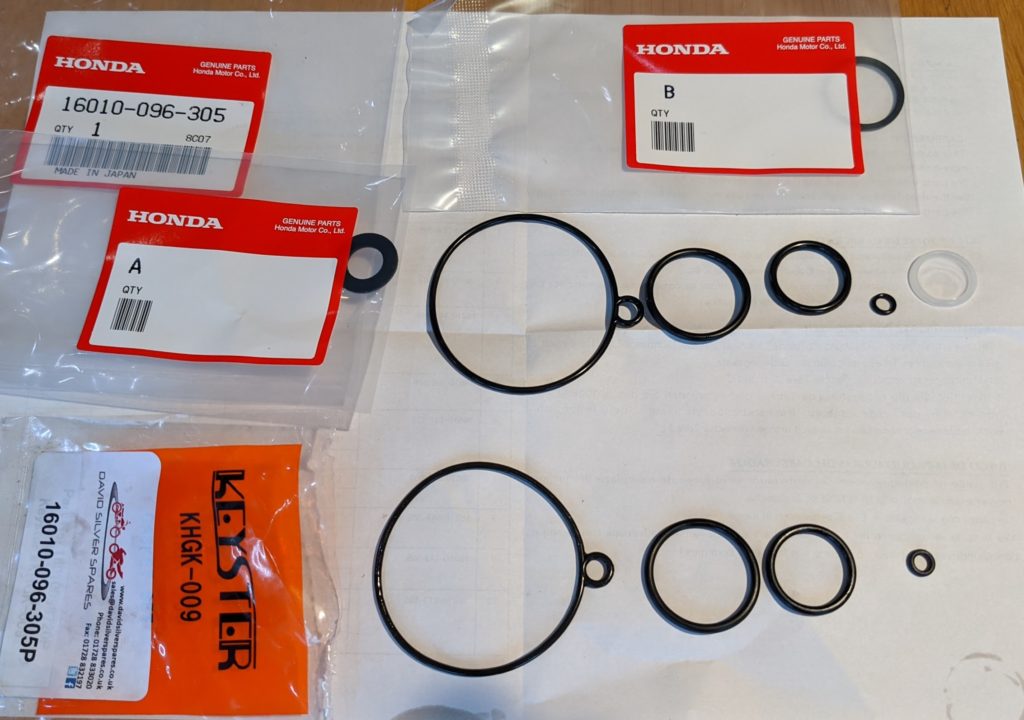
Here are the parts numbers from the C90 Z2 parts catalogue:
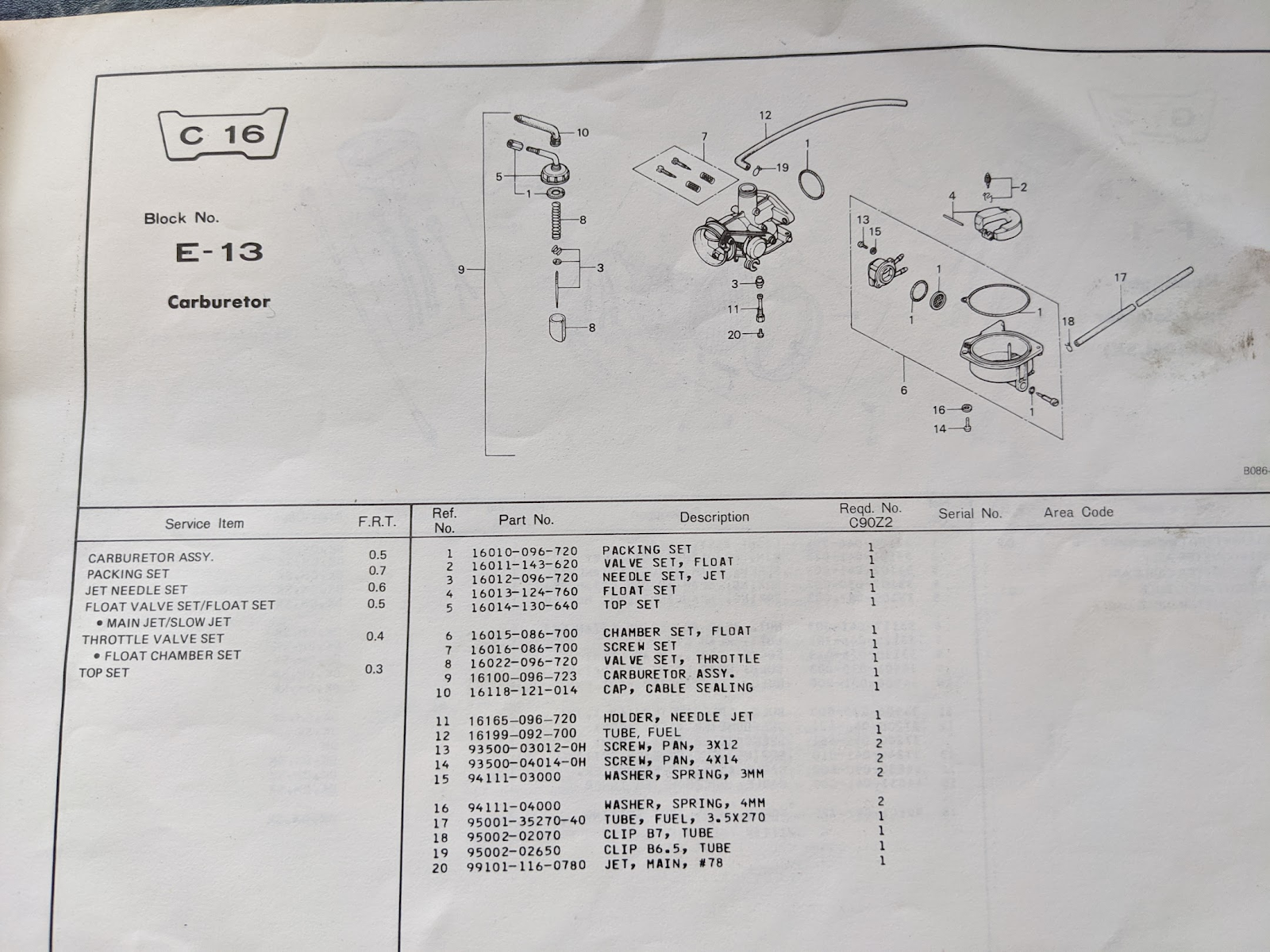
References
| 1 | companies like Keyster have to stock parts for hundreds of carbs so there is no guarantee that the replacements – even if well machined – will be an exact copy of the originals rather than something they had already made for a different carb that is a close fit.⏎ |
| 2 | CMSNL carry stock – for those in the UK David Silver may have these parts locally. ⏎ |
| 3 | I have’t bought one so can’t be sure that the 38 size from keyster is the same size as the original, although Keyster do advertise it as a replacement for Honda carbs (this type of push-fit pilot jet was common on Honda bikes in the 1970s.⏎ |